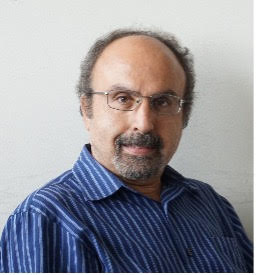Q&A with Dr. Mahmut Reyhanoglu: CSU’s New Director of Robotics Engineering
May 6, 2021

Columbus State University welcomes Dr. Mahmut Reyhanoglu as its new director of Robotics Engineering. Reyhanoglu holds degrees in aerospace, electrical and mechanical engineering and has spent his entire career teaching students and conducting research.
He joins CSU as the university opens its new robotics engineering lab to its first cohort of undergraduate and graduate students.
Q: Welcome to Columbus State! Tell us a little bit about the unique robotics program at CSU.
Columbus State is proud to be the only college or university in Georgia that offers both a bachelor’s and master’s degree in robotics engineering. CSU’s robotics engineering program is student-focused and emphasizes creative 21st century skills.
Q: What careers are graduates of the program qualified for?
The driving force for the robotics engineering program at CSU has been our partners and regional stakeholders, like Fort Benning, Pratt & Whitney, Kia, Kodak and others who actually utilize some form of robotics systems. Our graduates can work as robotics engineers, automation engineers, hardware developers, or software developers — so the program offers them a broad range of career opportunities.
Q: What kind of work will be the focus of our robotics engineering lab?
CSU’s Robotics Engineering Lab offers students state-of-the-art robotics systems, including a robot arm, an autonomous driving car, helicopter test beds, a ground robot with a vision system, and some new robotics systems that we will be extensively using in our classes and our research. The shop has the latest equipment for machining. We have all the tools necessary to make the Robotics Engineering Program a successful experience for students and faculty researchers alike.
Q: What kind of hands-on research opportunities are available to undergraduate and graduate students?
In our lab, we want to enable students to do important research in robotics. We will have research opportunities for both undergraduate and graduate students. The students will be able to take undergraduate research classes, labs, work on projects with elements in image processing, artificial intelligence, robotics arm design and control, and area robotics systems. The goal is to get the undergraduate students, especially, involved early on in research.
Q: How will having this program in Columbus help our greater community?
In 2018, the mobile robotics market was about a $9 billion industry. We expect it to grow to about $40 billion by 2026. With the lack of robotics engineering education programs in the state, and few students prepared to enter that pipeline as new professionals, most of the money being spent by stakeholders has been going outside of the state. Our strategy is retaining or attracting those kinds of expenditures to the Columbus area — to bring jobs for our graduates and to help further spur local economic and workforce development.